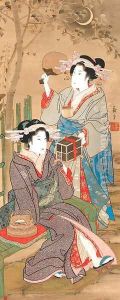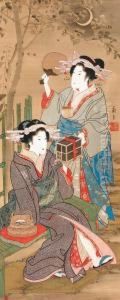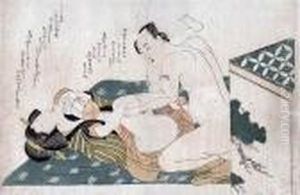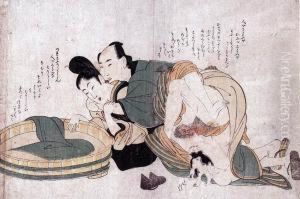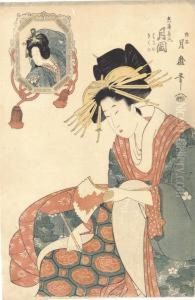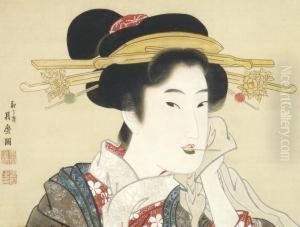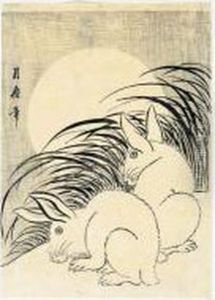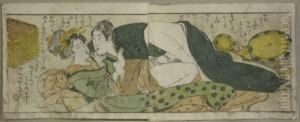Kitagawa Tsukimaro Paintings
Kitagawa Tsukimaro was a Japanese artist known for his work in the ukiyo-e genre of woodblock prints and paintings. Born in 1776, Tsukimaro was initially a pupil of Kitagawa Utamaro, one of the most prominent ukiyo-e artists of the late 18th century. Tsukimaro's style was heavily influenced by his teacher's focus on bijinga (pictures of beautiful women), which were popular subjects in ukiyo-e prints.
Tsukimaro's works were characterized by their delicate line work and attention to detail, particularly in the depiction of fabrics and patterns on clothing. He was skilled in portraying the grace and beauty of the courtesans and kabuki actors of Edo (modern-day Tokyo). His prints often featured the leisure activities and fashions of the Edo period's urban culture. Besides bijinga, he also produced landscapes and illustrations for books, including kyōka (comic poetry) anthologies.
Despite the initial influence of Utamaro, Tsukimaro managed to develop his own distinctive style, which was somewhat softer and more lyrical. His ability to capture the ephemeral beauty of his subjects won him recognition during his lifetime, although he did not achieve the same level of fame as his master or other contemporaries like Hokusai or Hiroshige.
Tsukimaro's career spanned a period of transition in Japan as the country gradually moved towards the Meiji Restoration. However, his works remained rooted in the traditions of the Edo period, reflecting the aesthetics and culture of a world that was slowly fading away.
Kitagawa Tsukimaro's contribution to the ukiyo-e genre has been appreciated by art historians and collectors, with his prints being held in various museum collections around the world. Although lesser-known compared to the giants of ukiyo-e, his art offers a window into the world of late Edo period Japan and the genre's rich visual history. Tsukimaro passed away in 1839, leaving behind a legacy of elegant prints that continue to be admired for their beauty and historical value.
